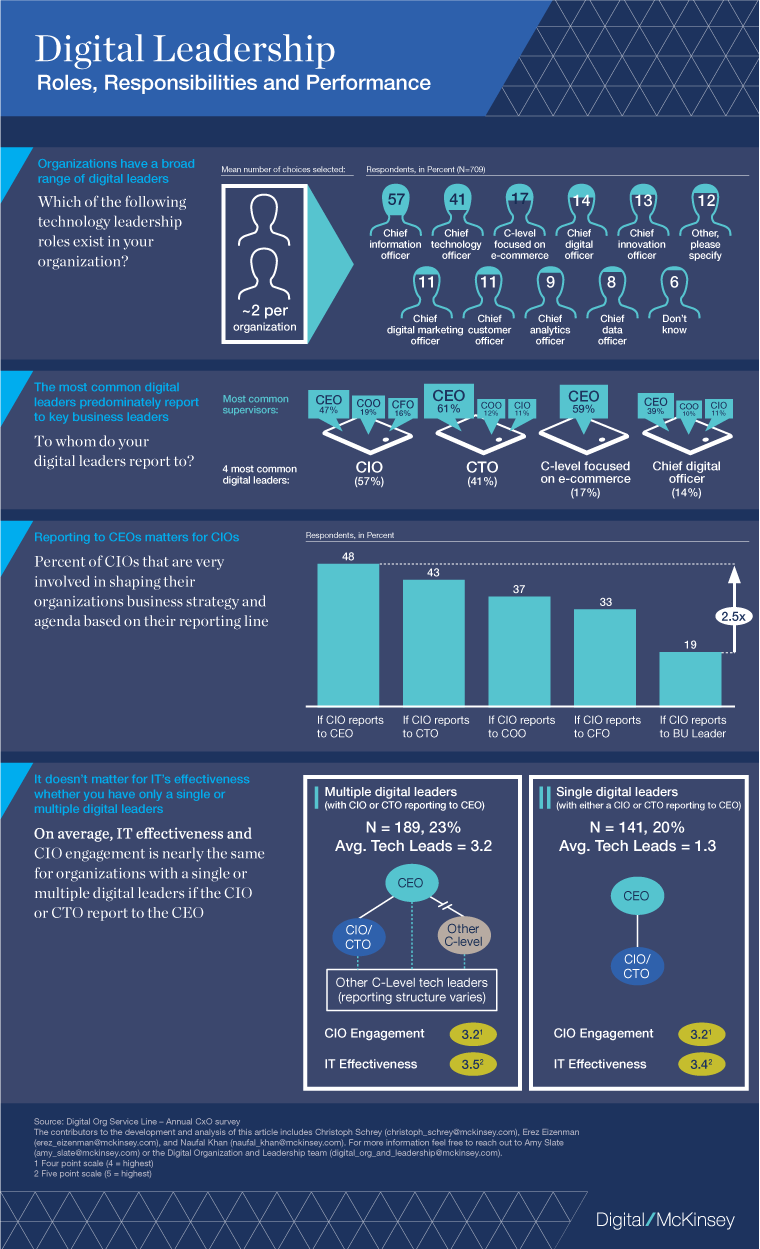by Erez Eizenman, Naufal Khan, and Christoph Schrey
Digital or technology leadership has drastically changed over the past few years. Most companies traditionally either had a chief information officer (CIO) or chief technology officer (CTO) who led all technology-related initiatives. There were no other technology leadership roles. Today, companies have, on average, close to two CxO-level digital leaders, and some companies have six or more CxO-level technology leaders.
That raises two questions: Which digital and technology functions are owned and led by which leader, and how are a multitude of digital leaders working effectively together? In a recent survey we conducted of more than 700 executives, we learned that a third of the respondents didn’t know which leader was responsible for most digital/technology functions (e.g., application development, infrastructure operations) in their organization. With more CxO-level leaders driving digital and technology work, the alignment on roles and responsibilities becomes even more difficult.
Therefore, having more digital leaders at the CxO-level doesn’t necessarily make the technology function of an organization better. Appointing a chief digital officer doesn’t necessarily make a company more effective in developing and deploying digital solutions. Even more striking, adding these new roles without an aligned operating model can actually lead to more confusion, power struggles, and a negative effect on the company’s overall IT performance.
However, there are situations where purposefully establishing new digital leadership structures has its benefits and will improve digital effectiveness and efficiency. For example, elevating digital leaders by having them directly report to the CEO helps. In organizations where the CIO, CTO, or any other digital leader has such a direct reporting line to the CEO, IT/digital is perceived as more effective than in organizations where they do not. This not only has an impact on the (perceived) performance of the organization, but also improves how much digital leaders participate in shaping the company’s business strategy, a goal desired by both business and IT.
See the attached infographic for more detailed results of our survey.

Erez Eizenman is a partner in McKinsey’s Toronto office. Naufal Khan is a partner in our Chicago office, where Christoph Schrey is an associate partner.